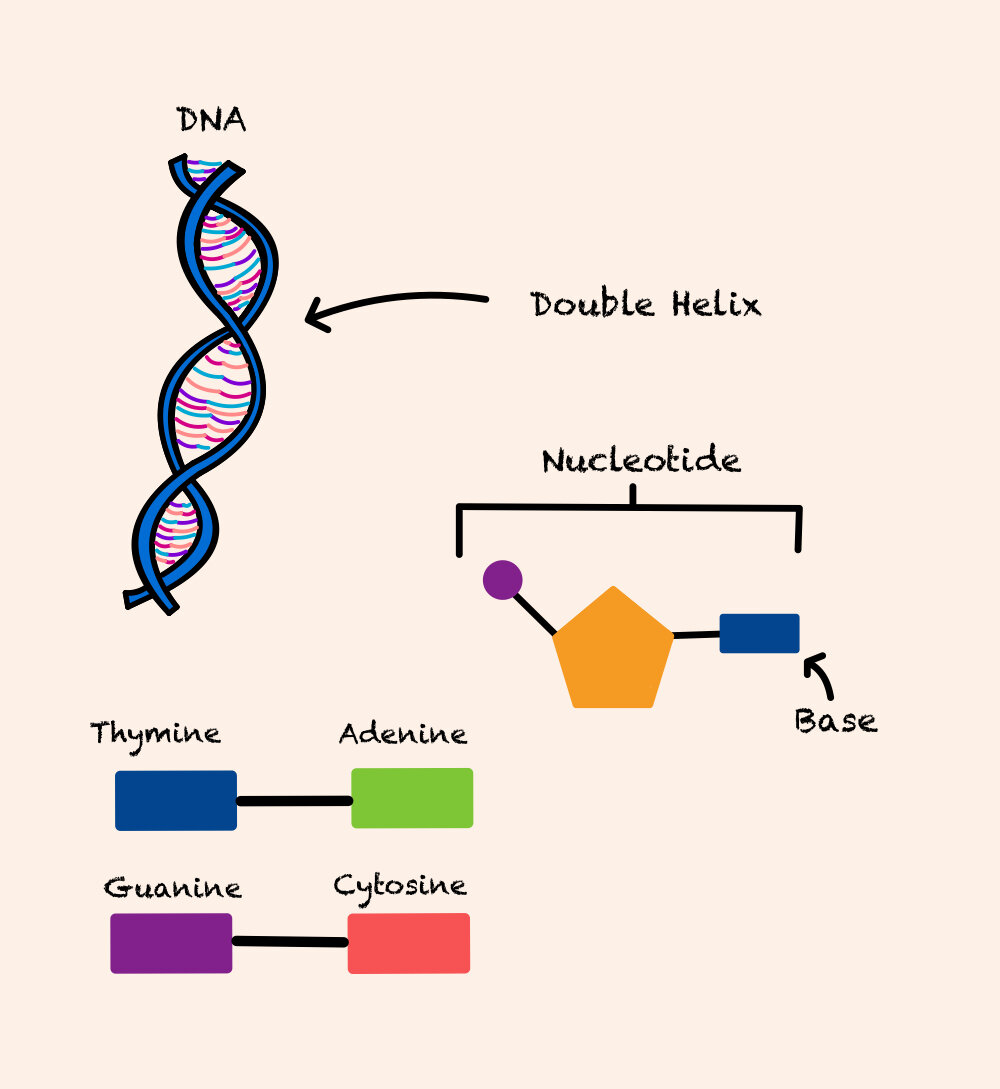DNA and Protein Production
DNA is the code that makes us the people that we are. It is travelled down through generations, making your DNA a perfectly unique amalgam of all of your ancestors before you.
Proteins are created from the DNA code. Proteins are vital for keeping cells alive.
Bases and Nucleotides
DNA (deoxyribonucleic acid) is the code within the nucleus that allows cells to function and replicate. Here we will discuss the structure of DNA.
If you look at a DNA molecule, it has what is called a double helix structure, as shown in the diagram.
The individual units of DNA are called nucleotides. Each nucleotide has a section called a base, as shown in the diagram. These nucleotides are lined up in the two strands of the DNA structure, creating the double-helix.
There are four DNA bases: Thymine (T), Adenine (A), Cytosine (C) and Guanine (G). The two strands of DNA making up the double-helix are held together by base pairs. Thymine (T) is always paired with Adenine (A). Cytosine (C) is always paired with Guanine (G). Base pairs are said to be complimentary to one another.
These base pairs make up a very long and variable genetic code within DNA, with the only variation being the order of the bases.
Genes and Proteins
Genes are a section of DNA which codes for a specific protein.
Proteins are made up of amino-acids.
The genetic code, determined by the order of bases within a gene, in DNA codes for a specific chain of amino-acids.
This all occurs within the ribosome in the cytoplasm.
RNA
Messenger RNA (mRNA) is a molecule that carries a complementary copy of genetic code from DNA in the nucleus, to the ribosome in the cytoplasm. This is where protein synthesis occurs.
So, to reiterate, mRNA copies a sequence of genetic code from the DNA sequence, carries it it of the nucleus and into the ribosome. This is where the base sequence copied by mRNA codes for specific amino-acids, which are all bound together in the ribosome to make proteins.
Key Points!
-
DNA
DNA is the genetic code that controls cells.
-
DNA structure
DNA are made up of nucleotides
Nucleotides have a base, which is either adenine (A), cytosine (C), guanine (G) or thymine (T).
DNA has a double helix structure.
-
Genes
Genes are sections of DNA that code for specific proteins.
Proteins are made up of amino acids.
-
RNA
RNA copies genetic code from DNA and carries it from the nucleus to the ribosome in the cytoplasm. This is where the RNA codes for a specific chain of amino acids.



